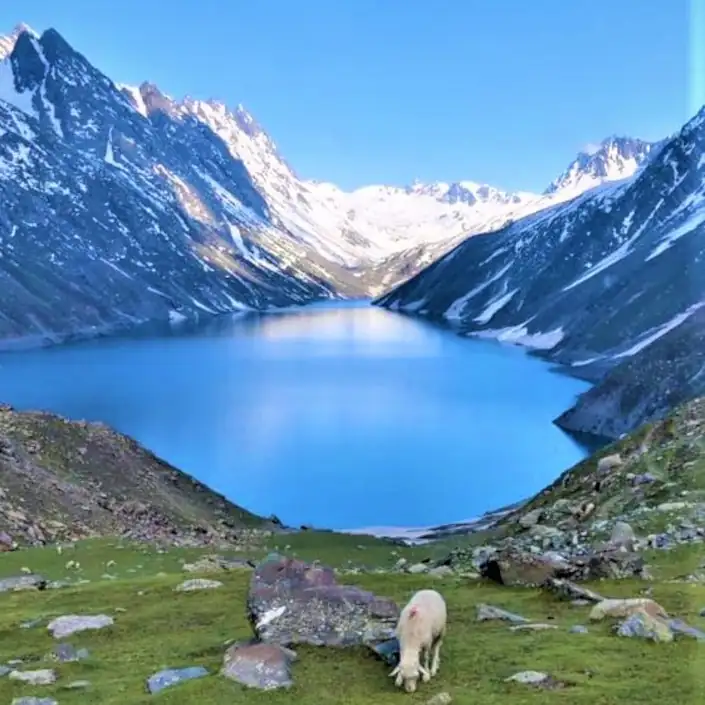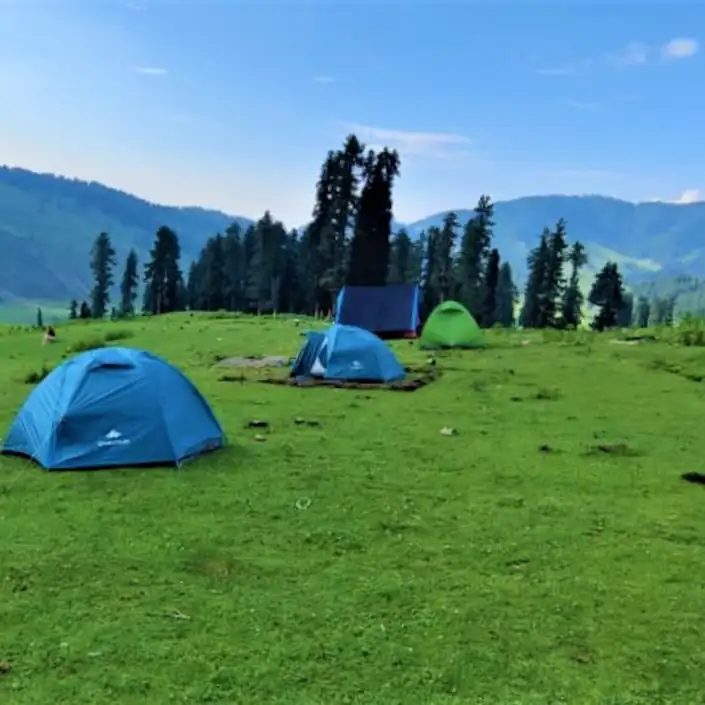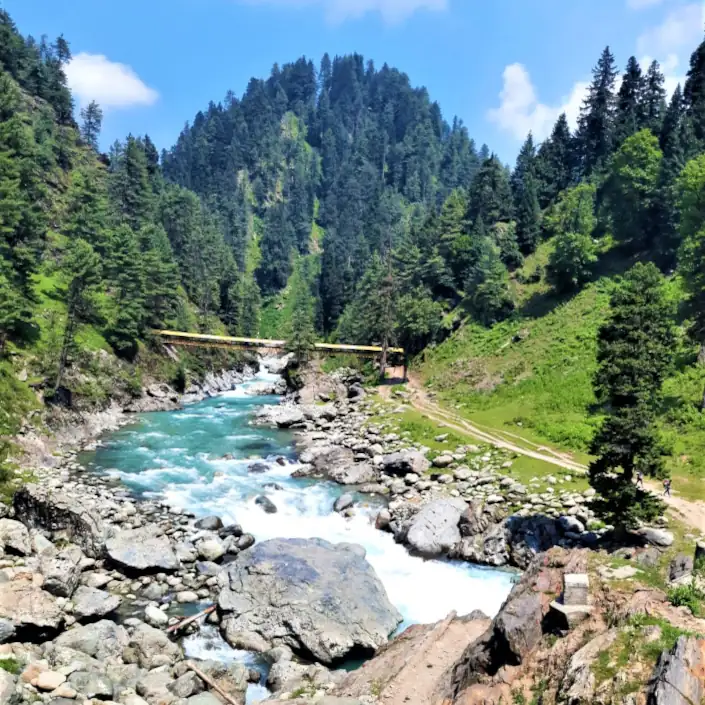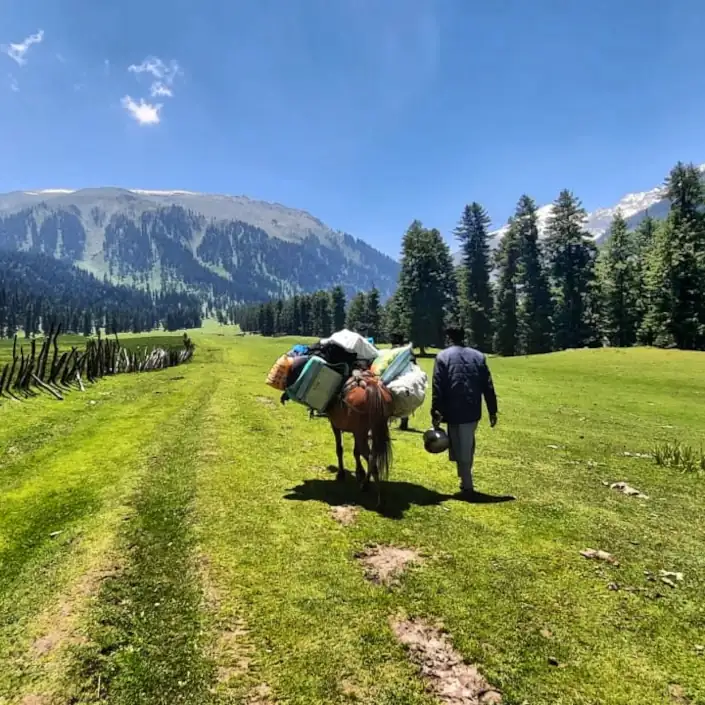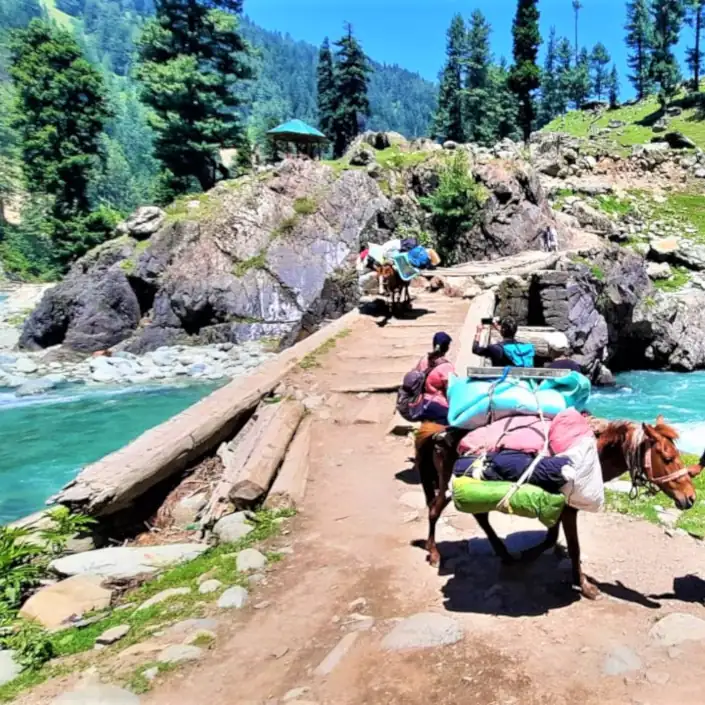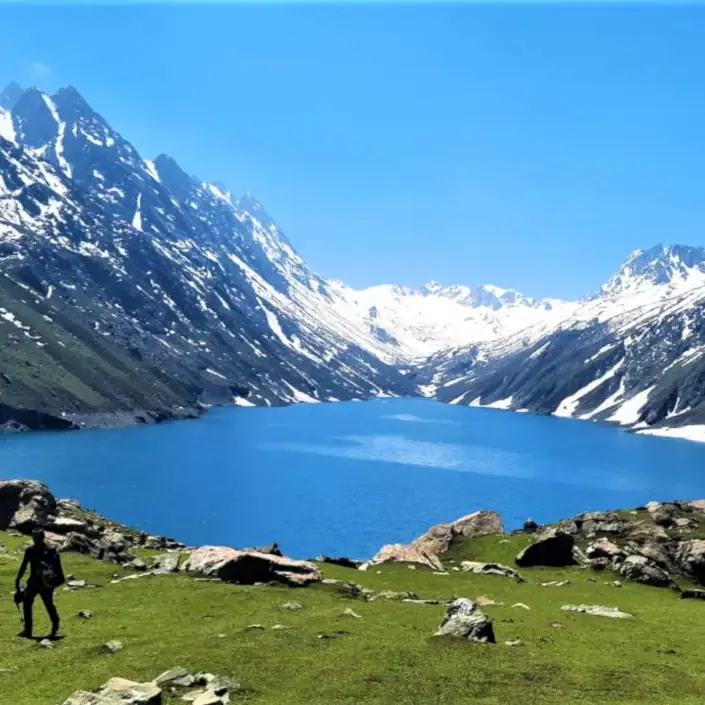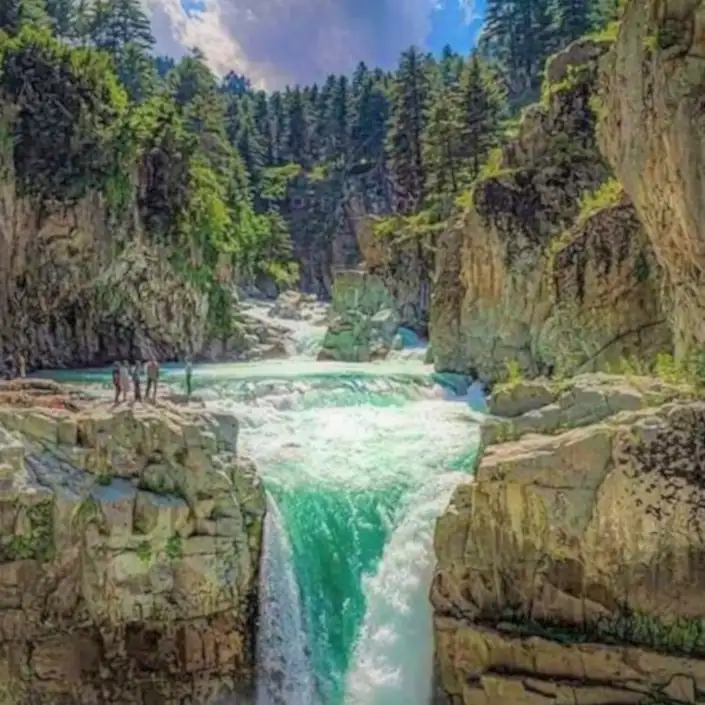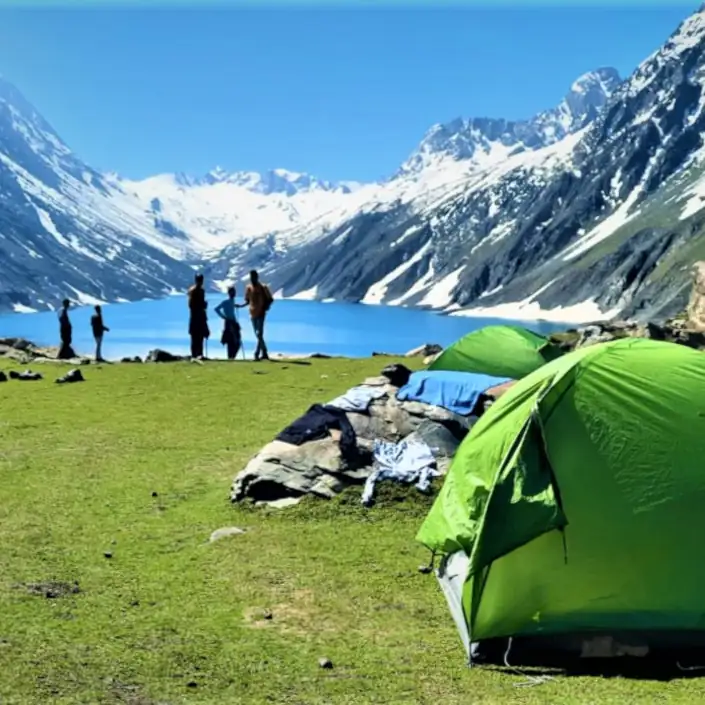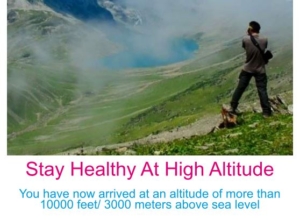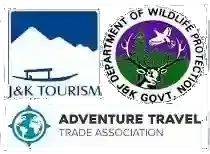Airport transfers; 2 way transport from Srinagar to Aharbal.
Introduction
| Arrive: Srinagar, Kashmir Depart: Srinagar Kashmir Best Time: June to September | Duration: 7 Days Trek-Distance: 36 KM Highest Altitude: Kounsarnag (3570m) | Activity Level: Level 3 | PRICE INR 23700/Per Person |
Aharbal Kounsarnag Trek expedition is the only major trek in the Pir-Panjal Mountain range, a sub-mountain range of the Himalayas. The trek starts from Ahabal Falls the main tourist attraction in Shopian known as the Apple Bowl of Kashmir. It serves as a base camp to the sacred Lake of Kounsarnag. Kungwattan and Mahinag are the best camping grounds of the Kashmir Valley.
Though trekking in Kashmir is not the newest but still this expedition is no walk in the park. Arduous days, steep and rocky passes, and altitudes approaching 4200m all collide to create a challenging trek in one of the most beautiful and serene Himalayas of Kashmir.
While planning your trek, as a beginner keep the following points in consideration:-
- you feel fit enough to trek for hours.
- you walk two or three kilometers daily.
- you don’t have any breathing problems.
- you are not scared of heights.
Inclusions
What’s included in the Price?
What’s not included in the Price?
Itinerary
Brief Itinerary
Day 1 :- Srinagar to Aharbal
- Arrive Srinagar (Alt. 1600m)
- Pickup from Srinagar airport or Bus stand
- 70 kms drive to Aharbal, approx 3 hours.
- Our first campsite Aharbal Water Falls (alt 2200m)
(Assistance at Srinagar airport and drive to Aharbal. Tea, dinner)
Day 2:- Aharbal to Kungwattan (trek).
- Start trek. 7 kms trek, approx 6 hours
- Altitude: 2200m to 2600m
- Camp at Kungwattan meadow
(Breakfast, lunch, Tea, dinner)
Day 3:- Kungwattan to Mahinag (trek).
- 6 kms trek, approx 5 hours
- Altitude: 2600m to 2900m
- Camp at Mahinag
(Breakfast, Lunch, Tea, dinner)
Day 4:- Mahinag to Kounsarnag Lake (trek).
- 5 kms trek, approx 4 hours
- Altitude: 2900m to 3400m
- Camp at Kounsarnag
(Breakfast, Lunch, Tea, dinner)
Day 5:- Kounsarnag to Koungwattan (trek).
- 11 kms trek, approx 6 hours
- Altitude: 3400m to 2600m
- Camp at Koungwattan
(Breakfast, Lunch, Tea, dinner)
Day 6:- Koungwattan to Aharbal trek, Drive to Srinagar
- Altitude: 3600m to 2200m to 1600m
- 7 kms trek, approx 4 hours
- 70 kms drive to Aharbal via Shopian, approx 3 hours.
- Check-in Hotel
(Breakfast at camp, Transport from Aharbal to Srinagar. lunch at Aharbal)
Day 7:- Srinagar Airport or Bus Stand drop.
- 5 kms drive to bus stand, approx 20 minutes
- 12 kms drive to Srinagar airport, approx 30 minutes
(Transport from Srinagar to the airport for departure)
Detailed Itinerary
Day 1: – Srinagar to Aharbal
On arrival at Srinagar airport or at the bus station, you will be met by our representative who will assist and drive to Aharbal. 65 km by road in a car through the apple town of Shopian. See around Aharbal waterfalls or have a short trek to Nilnag, a small lake covered in pine forests. Overnight stay in Tents.
Day 2: – Aharbal – Kungwattan (5 hours trek).
Pack your load on the horses and start trekking ascend through pine forests and reach to the upper meadows of Kungwattan covered in by wildflowers and broad pastures therein are camped the local shepherds. Overnight stay.
Day 3: – Kungwattan – Mahinag (5 hours trek).
Again early in the morning we pack up and proceed to ascend through the colorful meadows and trek through some treks of boulders and reach Mahinag Lake. Overnight stay.
Day 4: – Mahinag – Kounsarnag (5 hours trek).
Start trekking towards the last destination of Kounsarnag again it passes through the clear atmosphere of these high altitude meadows and streams and along with us is flowing down the Vishu River with its roaring sound enough for one to get lost, forget everything of the past. Finally, we reach the highlight of our trek the Kounsarnag Lake. Overnight stay.
Day 5: – Kounsarnag – Kungwattan (5 hours trek).
On our return, we descend through Mahinag to Kungwattan. Overnight stay.
Day 6: – Kungwattan – Aharbal – Srinagar (4 hours trek, 3 hours drive).
Start descending to Aharbal and 3 hours drive will take us to Srinagar. Overnight stay at houseboat.
Day 7: – Departure. Drop at the airport.
Our representative will drop you at Srinagar airport for departure.
What to Carry?
The trek is supported by horses. You will need to carry only a light sack, weighing about 4-6kg for your items like passport, money, and camera gear. The following is a list of the items you should carry on the trek. If you have items that can not be used on the trek, you can store them at our houseboat or our office and take them back after returning from the trek.
- Please note that only postpaid Indian mobile sim cards (Jio, Airtel and BSNL) work in Kashmir Valley. There’s no cellular connectivity from Day 2 to Day 6 of the trek.
- Please double check your passport or Aadhar numbers before submitting through booking form. These numbers are required for preparation of trek permits.
- Passport or a valid ID card
- Duffel Bag 60 liters
- One Pair Trekking Shoes
- One Pair Trail Approach Shoes
- Trekking Pants
- Hooded Rain Jacket
- Shade Hat
- One Pair Sunglasses
- One Pair Liner Gloves
- Small Size Day-Pack
- Two Pair Trekking Socks
- One Pair Sandals
- Extra Warm Clothes
- Warm Hooded Down Jacket
- Sunscreen Cream
- Lip Balm
- Any Personal Medication
Fitness
Kashmir Treks are achievable by anyone with a healthy lifestyle and a good level of general fitness. Team members should be willing to be part of a team working together to achieve the goal of the expedition. As a team member, you should have an adventurous and robust spirit. The biggest challenge on this expedition will be the many consecutive days of challenging trekking across alpine terrain, much of which at altitudes of above 3000m.
Minimum fitness requirements
- Trek: up to 7km per day.
- Daily activity: up to 5 hours’ trekking per day.
- Carry: up to 5kg in a day-sack.
- Terrain: remote, uneven, snowy, icy, rocky, sometimes exposed terrain at up to 4200m.
- Climate: Can be sunny in valleys and cold and windy at high altitudes. June and September months are cooler than those of July and August. Averages are 3000m, 1°C to 20°C.
- Swim: not required though there will be stream crossings to make.

